After the Kick-Off and the Visual Management awareness workshop, we have arrived at workshop 3: implementation!
I will describe in this article as usual the intentions of the different activities selected as well as the results obtained.
Related articles:
- Agile Rocket: Visual Management Module
- Workshop 1: Kick-off
- Workshop 2: On the Board
- Workshop 3: Implementation (Part 1)
- Workshop 4: Implementation (Part 2)
- Visual Management Module: Retrospective and closing
Organization of the workshop
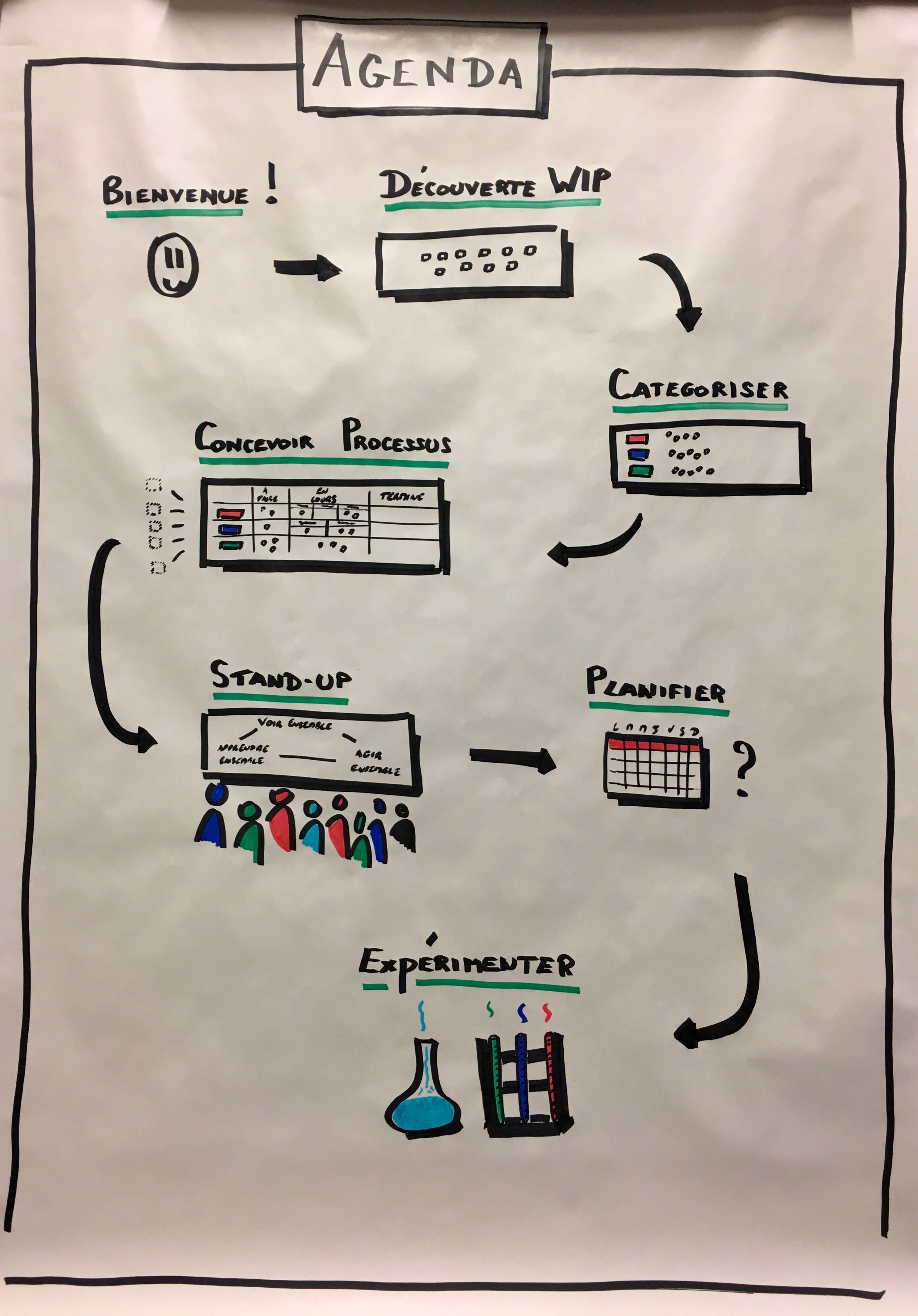
The intention here is to get participants to build a first actionable version of Visual Management. As in any workshop, it is important to help participants understand the objective of the session: showing it visually is most of the time very effective! We can therefore clearly see the stages of the construction process and the way in which the painting will gradually evolve in the first part. The second part corresponds to the “actionable” part of the intention.
Note: The objective of the module being to transform a sum of individuals into a collective, the construction process is just as important as the result. We then seek as much as possible to provide a framework in which people will have to act as a group and make decisions together.
Step 1: Discovering the WIP
"Let's highlight all the work in progress of the team!" »
I then ask the participants to write on a Post-it the subjects they are working on at the moment. Generally, about 5-7 minutes are enough, we are not trying to be exhaustive here.
I remember the following rules:
- We write on a Post-it with a marker (so that it is visible from a certain distance)
- Only write one idea per Post-it (to be able to handle them more easily later)
Note: We are not racing to see who will have the longest (list)! The important thing is above all to see what represents today's reality.
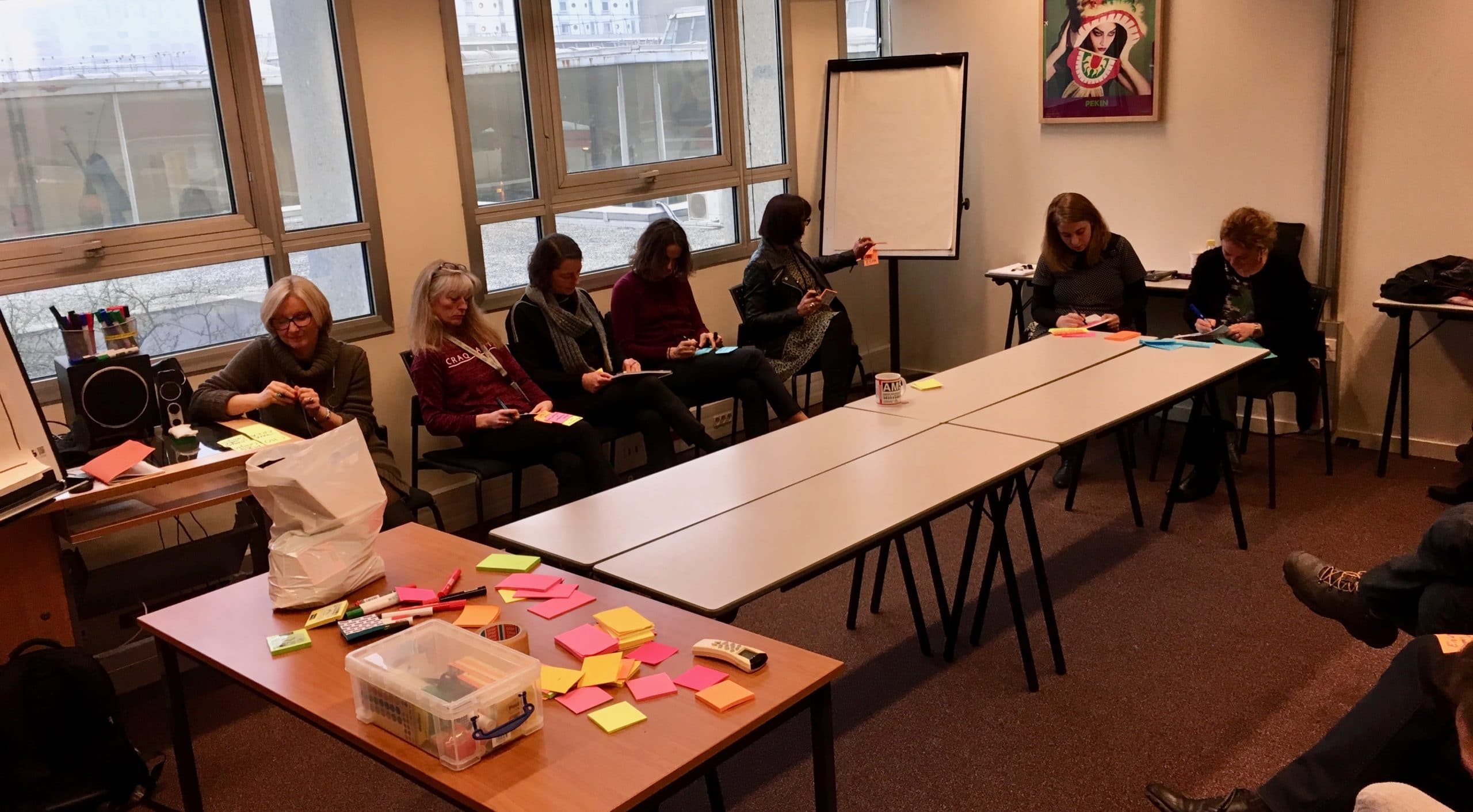
When the time is up or when the participants seem to have finished, I invite them to come and display their productions.
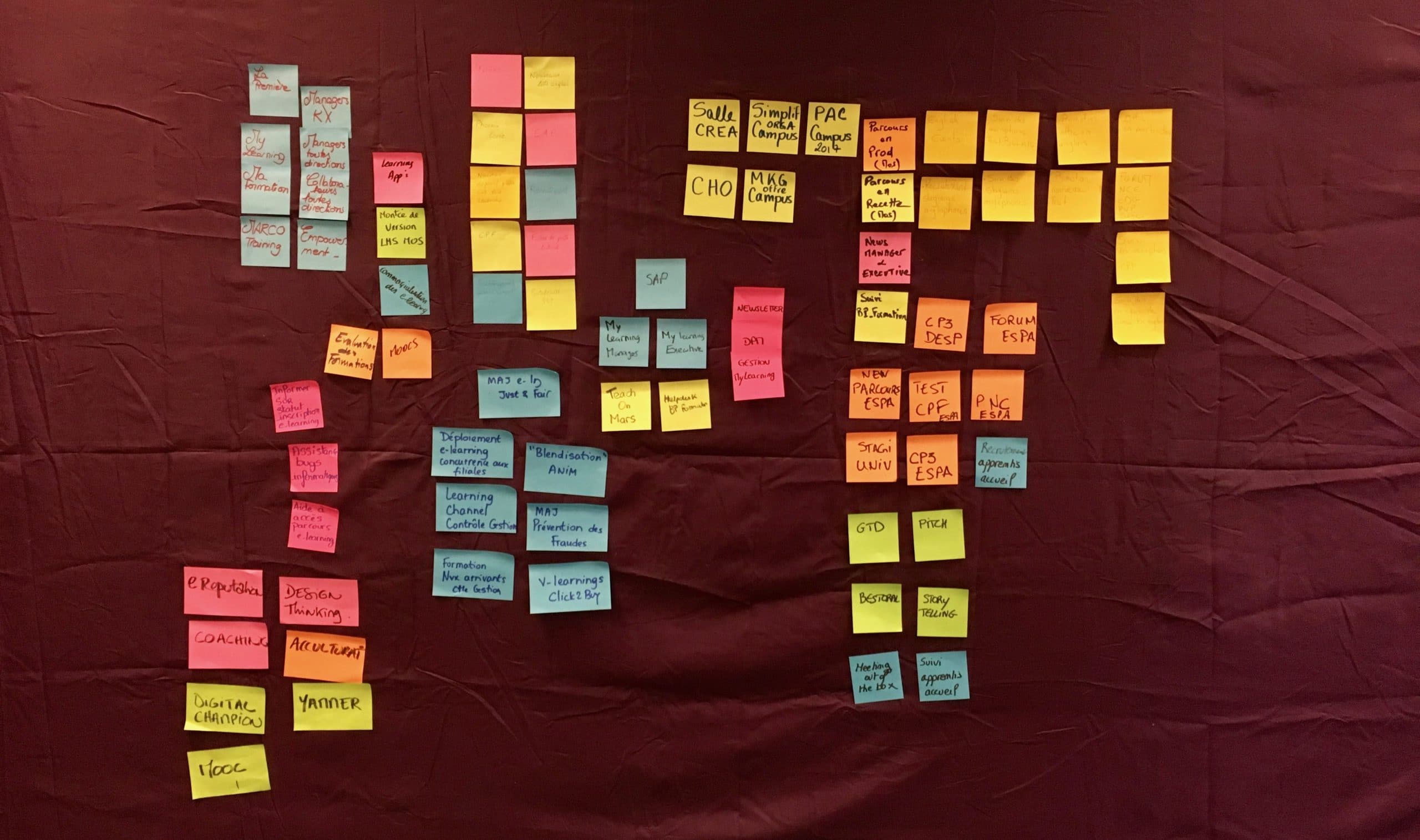
It therefore seems interesting to me to probe the feelings of the group:
How do you feel about all this work?
Is this what you imagined?
The participants seem surprised, it emerges from the exchanges allowing a first awakening of the group on the whole of the work which it supports today.
Step 2: Categorization
After highlighting all the work in progress, I invite participants to group elements of the same “type” together. The term "type" is not always very clear so I sometimes speak of elements "that look alike". One of the challenges of facilitation is to be specific enough to get people moving but vague enough to give free rein to the creativity and collective intelligence of the group.
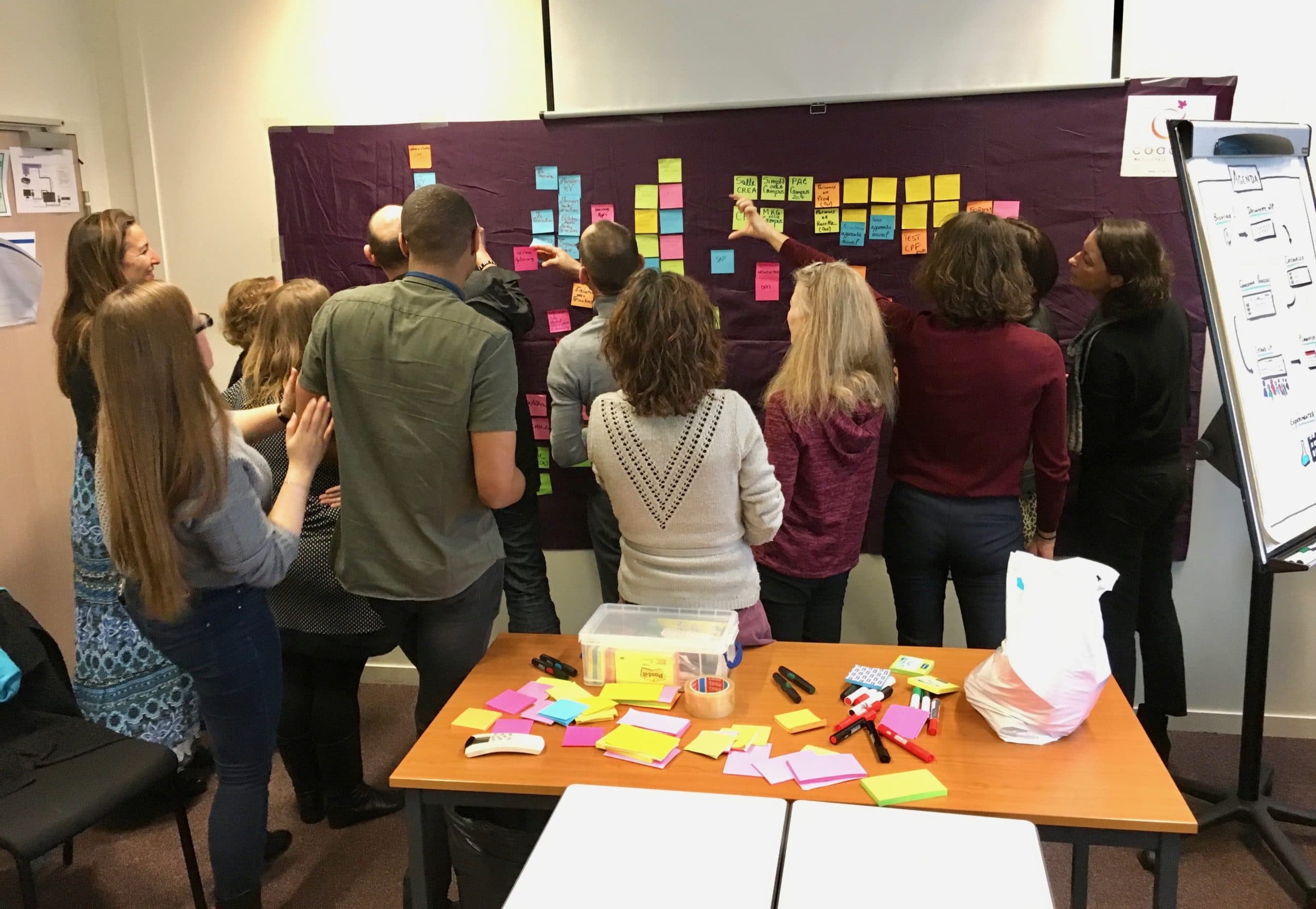
For about ten minutes, I voluntarily stand back, as an observer. The exchanges multiply, the post-its move and the magic happens. The wall support has a real impact on the group dynamics for this kind of exercise: we begin to create a habit of putting the group into action on a visual support! 😉
After a little reorganization, here is the result obtained:
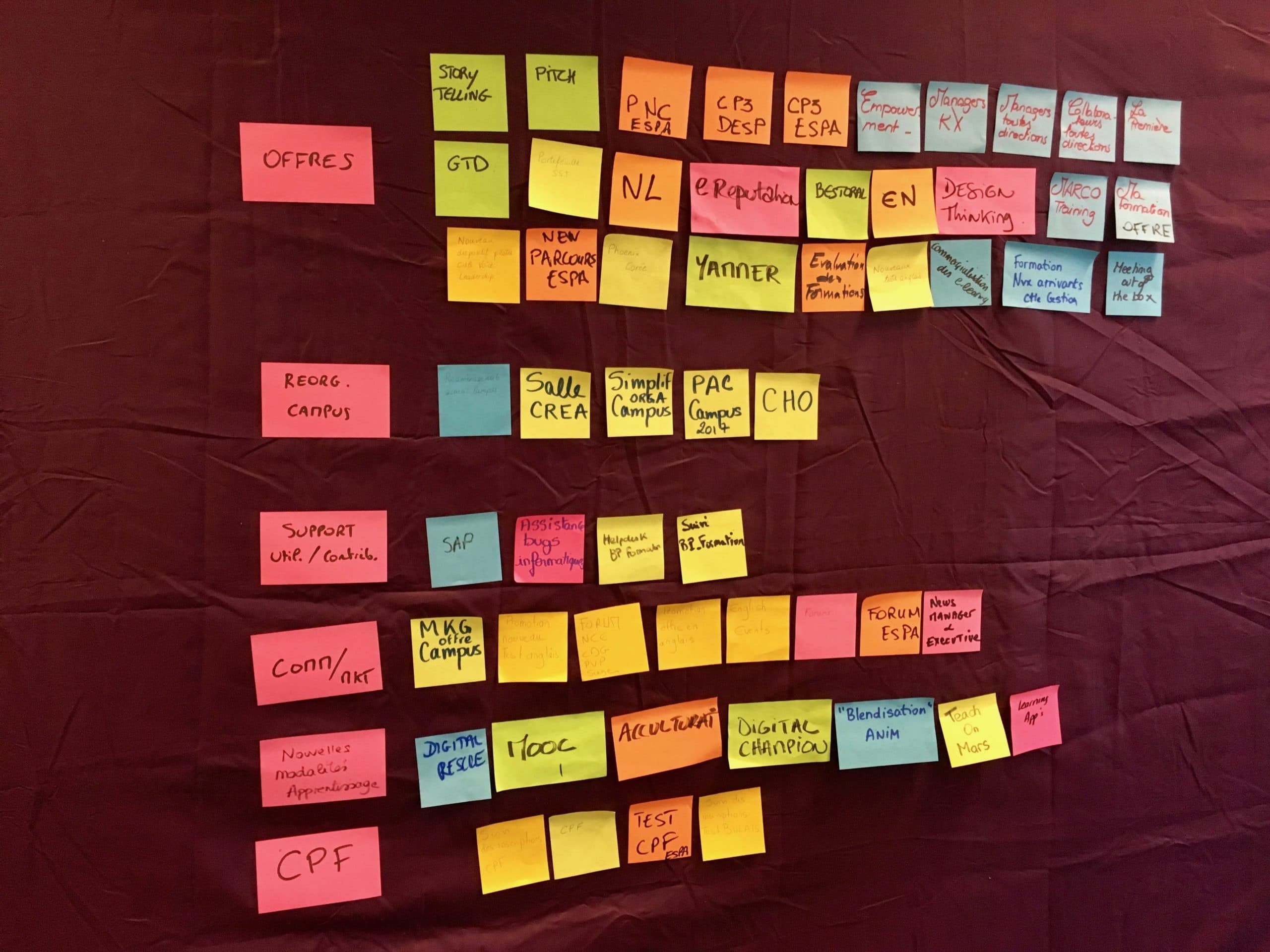
Each group thus includes a header allowing it to be identified. We begin to structure and organize the work.
Step 3: Process Design
Once the groupings have been made, we embark on the description phase of the process.
I invite the participants to form sub-groups, to select one of the categories and to describe the process implemented to bring an element until its completion. One approach may be to take an example and describe what has been done and what remains to be done in order to consider it complete.
A constraint I imposed this time was to develop at most 5 steps : this makes it possible to limit the desire of the participants to want to build the perfect process – which generally does not even correspond to reality but rather to the idea they have of it. Remember that we want above all to represent the reality on the ground rather than the way things should be done ideally.
Note: I sometimes specify that an element can generically pass in the 3 statuses "To do", "In progress" and "Completed". The purpose of this phase is therefore to specify the steps that constitute the “In progress” status.
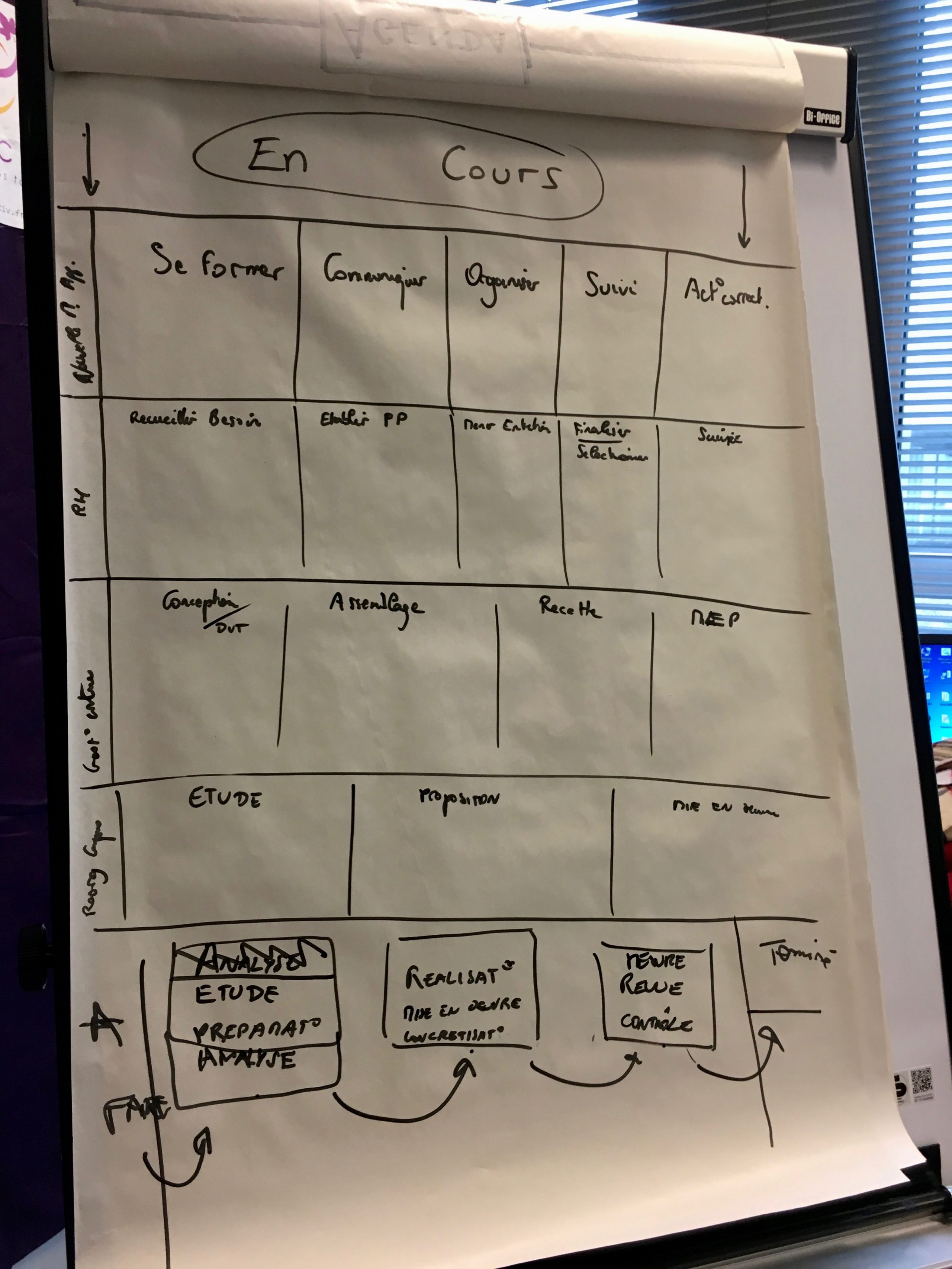
After about fifteen minutes, we all debrief together on Paperboard. I write down the results of each sub-group and invite the whole group to identify patterns or similarities in the steps mentioned.
We then notice that there are basically 3 steps that stand out – with more or less detail:

The exchanges then revolve more around terminology than on the steps themselves. I then propose to the group to keep different terms at first and with experimentation, they will see what will be more useful to them.
The result then becomes the following:
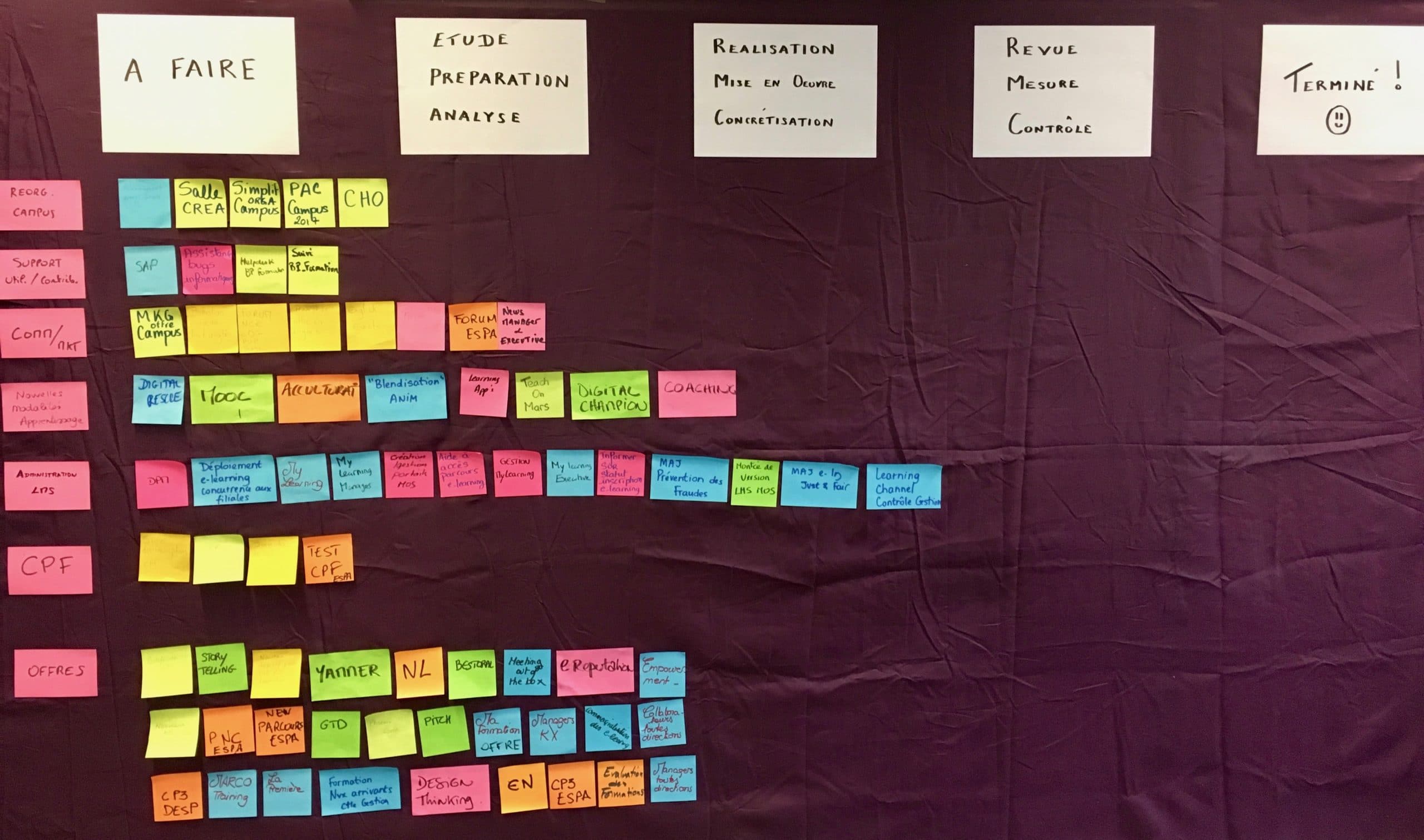
All you have to do is put the work items back in the right place!
By adding columns, we get this:
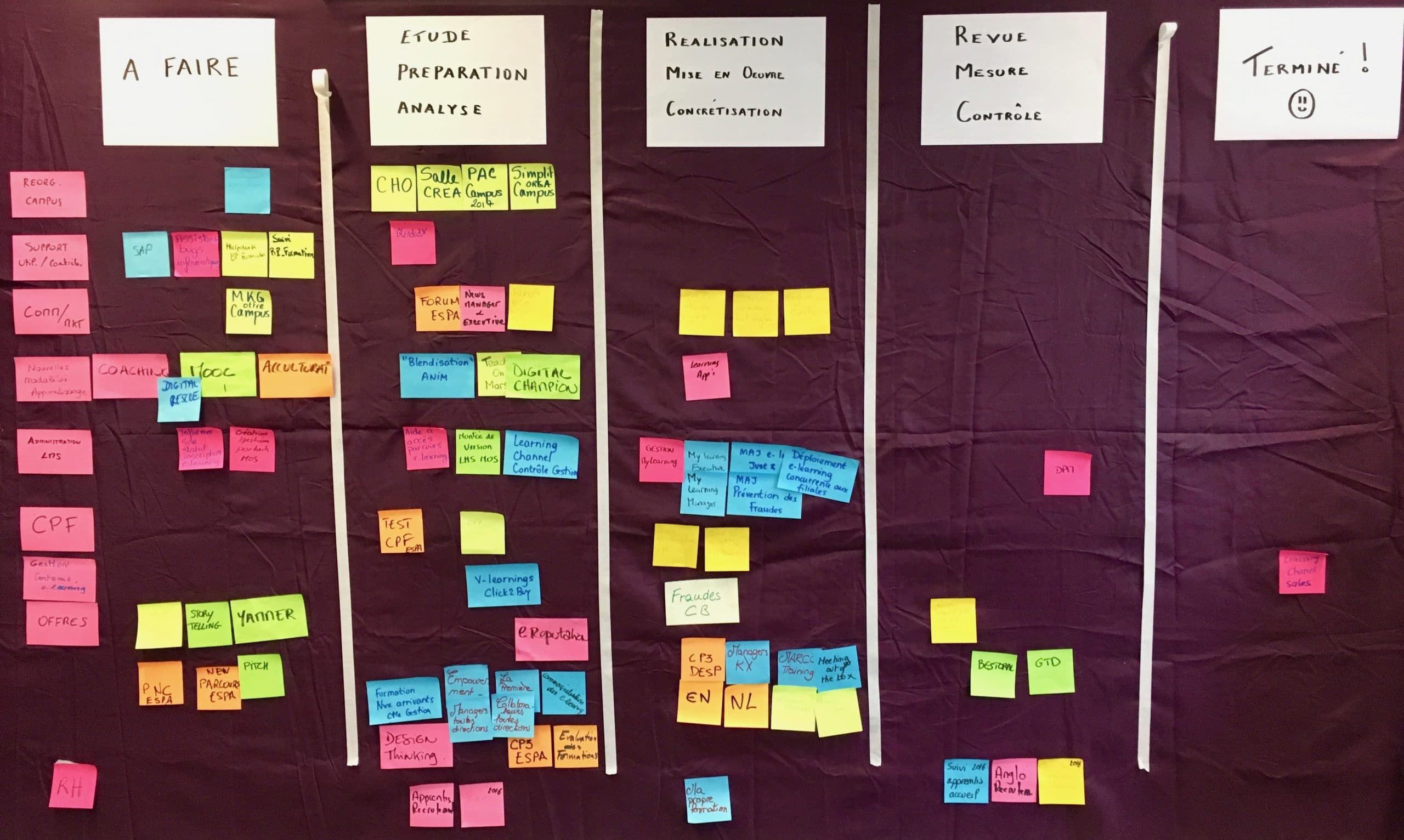
By adding lines, we get this:
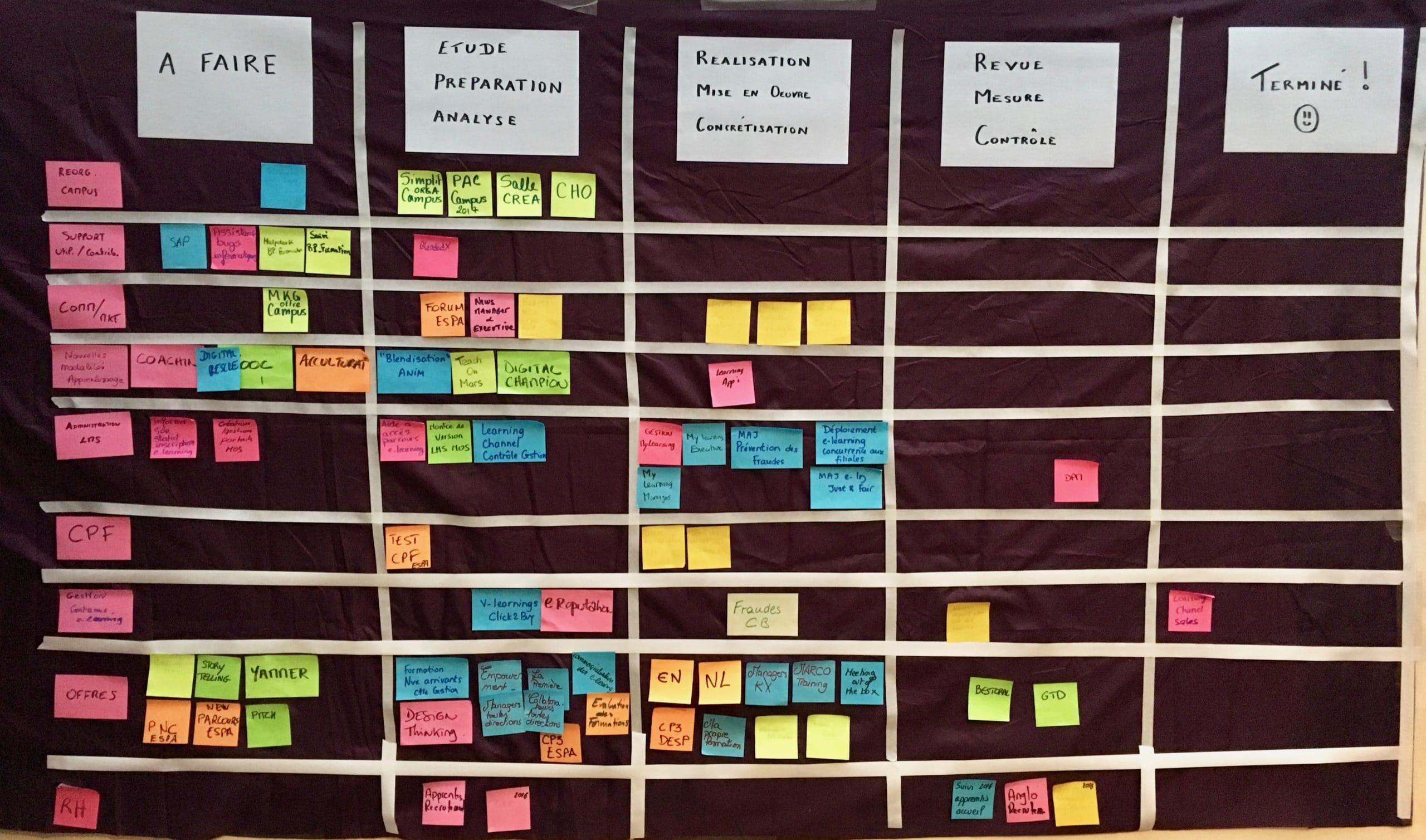
This will therefore be the first version of Visual Management that the team will use for a week.
Step 4: Stand-up Meeting
In order to make this Visual Management "actionable", it is necessary to combine it with a Daily Meeting.
The objective of the Daily meeting is to synchronize the collective in order to make the best decisions together.
I propose to the group to use a protocol different from that generally implemented in Scrum teams.
The group is first asked the following questions:
- Is the table up to date?
- Are there any items that are urgent or require special attention?
We then go through the flow from the output to the input (usually from right to left), pointing to each element:
- What is it missing to be finished/move on?
The person concerned generally takes the floor naturally.
- Do you need help ?
If this is the case, the person clarifies his problem but does not fit into his resolution. Otherwise, we move on to the next item.
The process stops when everyone knows what to do for that day – which means you don't necessarily go through the entire flow.
Step 5: Plan
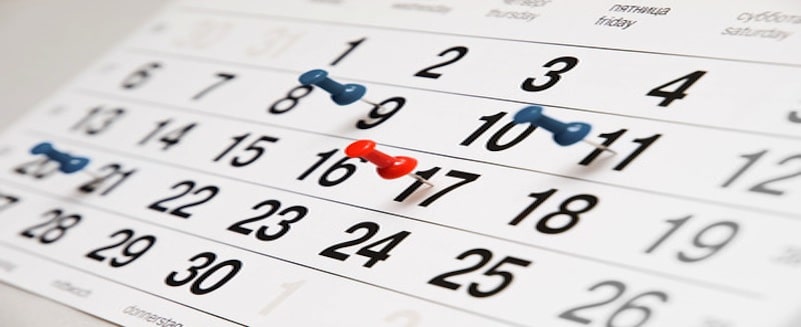
The moment of planning the Daily Meeting is an essential step and often generates a lot of exchanges.
As part of this workshop, I ask the group to perform a real Daily meeting, so EVERY DAY ! The debate therefore revolves more around the schedule than the date.
Note: This period of experimentation is crucial to allow the collective to learn and create a habit. In our case, it is possible to argue by explaining that at worst, it will only be for a week 😉
Step 6: Experiment

The experimentation phase lasts one week before the next implementation workshop. Every day, the team will therefore practice the Daily Meeting which I will attend throughout the week.
I ask everyone to plan 30 minutes for each Daily: 15 minutes of practice + 15 minutes of debriefing.
The organization is quite simple:
- Daily 1: Animation done by me to give an example of facilitation.
- Daily 2 to 5: Animation performed by a different person with me as an observer / support.
The team thus acquires field experience allowing it to learn and take a step back on the contributions of the approach. All of these elements will be brought to the second implementation workshop, an opportunity to use this energy to improve this first version of Visual Management.
Conclusion
The first implementation workshop aims to initialize the first version of the team's Visual Management. It's a good opportunity for the team to build something together, this something being a tool materializing their future collaboration.
The result obtained is therefore as important as the co-construction process itself.
I will describe the next workshop in which we will extend this first version of Visual Management in the next article! 😉







One Response
Olivier has accompanied us with my team for several years, in this light format and I must recognize the surprising effect of the approach: strengthening sharing, team cohesion, beginning of effort vs impact prioritization. Everything that was not natural becomes so little by little and the stand up meetings are well attended.
To be continued over time but impressively effective...